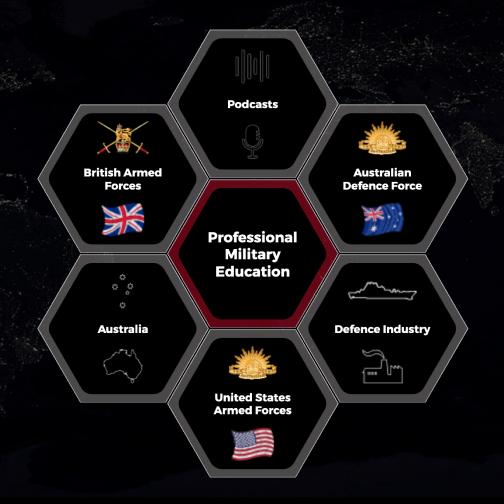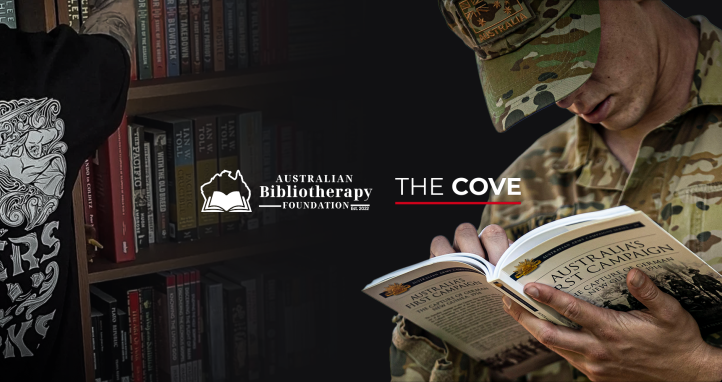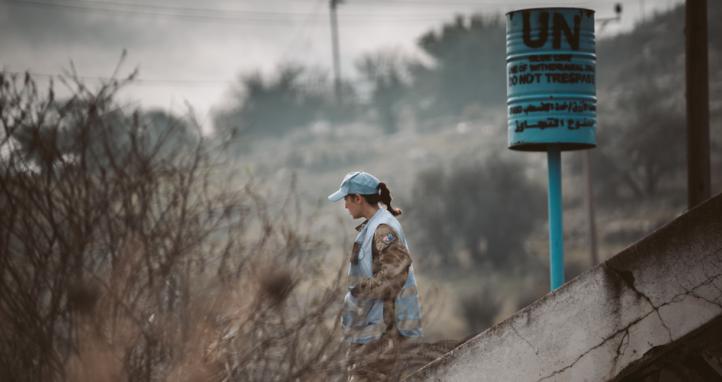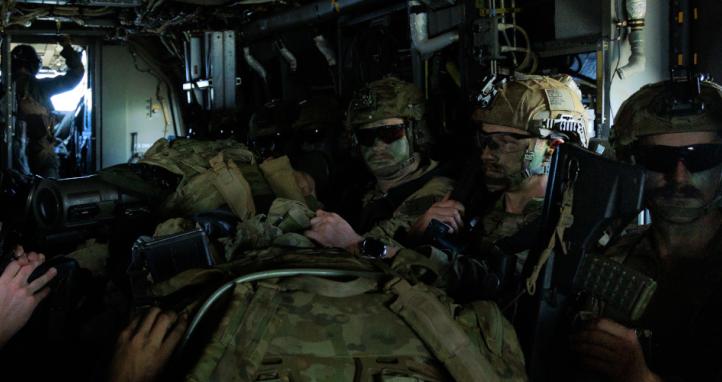Introduction
Clausewitz proposes that the best strategy is to have general strength, and critically strength at the decisive point.[1] This proposal provides a simple measure of effectiveness for evaluating strategy. Policy and strategy are distinctly different artefacts; this paper will define policy and strategy and address the differences between them. It will review Australian defence policy and strategy, highlight strengths and weaknesses, and suggest an area of improvement to provide enhanced resilience.
Defining Policy
If one considers policy as an extension of politics,[2] policy serves and defines a government’s objectives, which set the conditions and direction for the state. Policies should have three elements:
- Resolve a critical problem with a clear outcome,
- Evolve over time from initial concept to refined response, and
- Enable national power to resolve the critical problem.[3]
Assessing current Australian defence policy against those three elements, the clear goal is to defend Australia and advance its national interests.[4] This policy has evolved and been refined with a return to a strategy of denial,[5] and calls to harness all aspects of national power.[6] Australian policy meets those three elements, whilst preserving national power and simultaneously preparing for future challenges.
Defining Strategy
Strategy may be defined as the deployment of available resources to achieve a political aim whilst taking into account interactions with other actors.[7] Clausewitz defines strategy as the coordination of engagements to further the object of war.[8] Strategy can be further defined as coordinating efforts, using available resources by anticipating and considering opposing actors to achieve an objective. Therefore, an effective strategy may be defined as having coordinated strengths drawn from available resources to further an objective with weight given to other actors. Using Clausewitz’s model (general strength and strength at the critical point) is suitable to measure a strategy’s effectiveness; however, it cannot fully evaluate it, as the outcome will be an unknown, evaluation may only occur in hindsight.
Current Policy and Strategy
Considering the third element of policy above, against this definition of strategy, it is apparent that policy and strategy are intrinsically linked though distinctly separate artefacts. Strategy is the implementation of policy, made possible by national power.
Ensuring economic prosperity through sustainment of regional stability using a strategy of denial is a key outcome of Australian policy and strategy. Optimistically, this strategy will deter any conflict prior to it commencing.[9] Denial through deterrence is enabled by strong diplomatic relationships combined with a credible response. The strategy utilises current and future capabilities, Australia’s geographic advantage, and diplomatic relationships.[10] This strategy draws strengths from available resources and considers adversary actions in pursuit of Australia’s security and national interests. This strategy appears effective when evaluating it against Clausewitz’s model. The unknown is will it be effective at the critical point.
Australia has gained economic advantage through global trade due to its access to resource reserves. Advantages through any domain will be limited as competing nations seek to bridge the delta for their own gain.[11] To sustain Australia’s current national strength, other sources of national power must be utilised to provide an advantage that extends beyond resource harvesting.[12] Investing in technological advances and strengthening diplomatic relationships may provide asymmetric advantages[13] that continue to sustain national power.
Innovation
The conflict in Ukraine is underpinned by the adoptive, adaptive, and innovative use of technology (drones, electronic warfare). These systems are being utilised at scale for the first time in a major conflict,[14] which has amplified innovation. Application of these systems is not the key point, but rather the innovation and adaptation of emerging systems at a pace and scale of relevance, which has significantly influenced the conflict. Whilst innovation in Ukraine is occurring out of need, Australia must consider innovation and its benefits in current policy and strategy. Innovation must be sustained as the benefit of each adaptive response is likely to be temporary.
The Advanced Strategic Capabilities Accelerator (ASCA) was established to provide rapid technology into Defence capability in partnership with industry and research.[15] ASCA’s innovation hub provides limited pathways for submission however, with no dedicated link to academia to amplify innovation.[16] Innovation at the point of curiosity should be fostered via a structured program funded by ASCA. The establishment of the Jet Propulsion Lab[17] via a similar program and the subsequent successes offer insight into the potential yield. The effect on national power may also extend to other areas, such as diplomatic and economic domains. Innovation could enable greater trade or strengthen diplomatic relationships.
Adaptive EMS Resource Management
The electromagnetic spectrum (EMS) is a natural resource that must be managed and employed as renewable and therefore capable of exploitation. Unlike traditional resources management, the electromagnetic spectrum is not depletable; it is a resource which has infinite reusability. When used, it is unavailable until it is not in use at which point it is immediately renewed.[18] This creates opportunity in how the EMS is managed at a theatre level and integrated across the domains. The risk of fratricide has increased as the employment of electronic warfare effects and associated systems have increased across the region. The increase of systems forces the need for effective management of EMS resulting in efficient employment across the theatre. The benefits of greater management will allow for manoeuvre of allied signals ensuring secured communications, resulting in decision advantage and EMS superiority.
Space Self-Reliance
The term self-reliance has been raised in response to emerging threats and changes to the political circumstances that Australia is now confronted with.[19] The traditional view has been that Australia should own and operate systems under the banner of sovereignty. I propose the term self-reliance should allow a more flexible application of options and actions. This means the ability to have control over those options and therefore being flexible with how and when they may be employed. The cessation of the JP9102 procurement activity with Lockheed Martin Australia for a single orbit GEO-based system[20] has presented an opportunity to better respond to the accelerating threat and emerging technologies in space as highlighted above, further presenting the opportunity to adopt this mindset within future space domain capability acquisitions. Having a self-reliant approach to future system acquisitions will allow for flexible employment at a time and place when Australia may need it. This approach will have a supporting effect on the deterrence strategy due to the ability to respond when and where Australia chooses.
Conclusion
Based on current strategy and policy, the Government has set the vector with a strategy of denial supported by strong diplomatic relationships. Through fostering innovation and adaptive management, additional elements of national power may be enhanced, leading to a greater deterrence effect. Whether Australia possesses the necessary strength at the decisive point may only be assessed after the event occurs. However, Australia’s strength will have been built on the dual foundations of current policy and strategy.
End Notes
[1] Carl Clausewitz, Michael Howard, Peter Paret, and Bernard Brodie, “On War,” 204, https://antilogicalism.com/wp-content/uploads/2019/04/on-war.pdf.
[2] Arnold J. Heidenheimer, “Politics, Policy and Policey as Concepts in English and Continental Languages: An Attempt to Explain Divergences,” The Review of Politics 48, no. 1 (1986): 3–30, https://doi.org/10.1017/S0034670500037499.
[3] Phil Harris, Alberto Bitonti, Craig S. Fleisher, and Anne Skorkjær Binderkrantz, eds., The Palgrave Encyclopedia of Interest Groups, Lobbying and Public Affairs, 1st ed. (Cham: Springer International Publishing, 2022), https://doi.org/10.1007/978-3-030-44556-0.
[4] Department of Defence, "2024 National Defence Strategy and 2024 Integrated Investment Program," 2024, https://www.defence.gov.au/about/strategic-planning/2024-national-defence-strategy-2024-integrated-investment-program.
[5] ibid
[6] ibid
[7] Adam Lockyer, Australia's Defence Strategy: Evaluating Alternatives for a Contested Asia (Melbourne: Melbourne University Publishing, 2017), ProQuest Ebook Central.
[8] Carl Clausewitz, Michael Howard, Peter Paret, and Bernard Brodie, “On War,” 128, https://antilogicalism.com/wp-content/uploads/2019/04/on-war.pdf.
[9] Department of Defence, "2024 National Defence Strategy and 2024 Integrated Investment Program," 2024, https://www.defence.gov.au/about/strategic-planning/2024-national-defence-strategy-2024-integrated-investment-program.
[10] Mick Ryan, "Australia's New National Defence Strategy: Mostly Continuity, Some Change," Center for Strategic and International Studies, accessed November 3, 2024, https://www.csis.org/analysis/australias-new-national-defence-strategy-mostly-continuity-some-change.
[11] Todd Harrison, "Building an Enduring Advantage in the Third Space Age," American Enterprise Institute, accessed November 3, 2024, https://www.aei.org/research-products/report/building-an-enduring-advantage-in-the-third-space-age/.
[12] ibid
[13] Andrew Dowse, “Australia’s Defense Strategy,” Air University (AU), accessed November 8, 2024, https://www.airuniversity.af.edu/JIPA/Display/Article/3900034/australia….
[14] Riley Bailey and Frederick W. Kagan, "A Defense of Taiwan with Ukrainian Characteristics," Institute for the Study of War, 2024, https://www.understandingwar.org/sites/default/files/A%20Defense%20of%20Taiwan%20with%20Ukrainian%20Characteristics_0.pdf.
[15] Department of Defence, "2024 National Defence Strategy and 2024 Integrated Investment Program," 2024, https://www.defence.gov.au/about/strategic-planning/2024-national-defence-strategy-2024-integrated-investment-program.
[16] Advanced Strategic Capabilities Accelerator. "Innovation Incubation." Accessed November 3, 2024. https://www.asca.gov.au/innovation-incubation.
[17] James D. Burke and Erik M. Conway, "A Selective History of the Jet Propulsion Laboratory," Oxford Research Encyclopedia of Planetary Science, June 30, 2020, accessed November 8, 2024, https://oxfordre.com/planetaryscience/view/10.1093/acrefore/9780190647926.001.0001/acrefore-9780190647926-e-172.
[18] Herter, Christian A, The Electromagnetic Spectrum: A Critical Natural Resource, 25 NAT. RES. J. 651 (1985). Accessed May 22, 2025 at: https://digitalrepository.unm.edu/nrj/vol25/iss3/6.
[19] Dibb, P. (2025). Australia needs greater defence self-reliance, and extra funding | The Strategist. Available at: https://www.aspistrategist.org.au/australia-needs-greater-defence-self-reliance-and-extra-funding/.
[20] Department of Defence. Defence. Available at: https://www.defence.gov.au/news-events/releases/2024-11-04/defence-prioritise-resilient-satellite-communications-capability. 04 November 2024.









